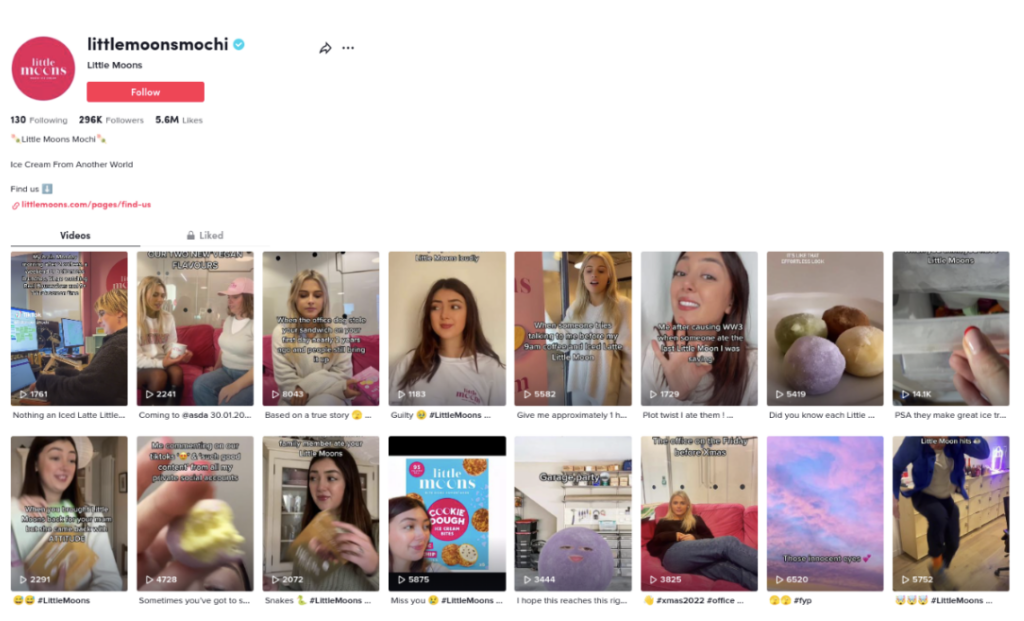
Don’t want your competitors to get ahead? Ready to perfect your operations? Never want to post a flopped marketing campaign again?
Then you’ll need access to solid, ongoing insights to inform your business, marketing, and sales strategies.
Enter: Big Data and analytics.
With big data and analytics leading you in the right direction, there’s no limit to the growth and innovations your business can bring forth.
Unfortunately, organizations that don’t recognize the importance of big data (and worse, don’t apply it), can end up wasting time, money, and precious resources on advancements that simply don’t work and are misaligned.
From helping you mitigate spending to supporting the customer experience, there are endless reasons you need to focus on big data and your analytics efforts.
If you’re ready to embrace big data and analytics, stick around to learn more about how these two components work, why businesses care about them, and the top five benefits of applying them.
What Is Big Data? And How Do Analytics Play a Role?
“Big Data” is a term that refers to a large volume of data and data sets that come in from a variety of publicly accessible sources, such as IoT devices, mobile apps, the cloud, websites, social media, and other channels.
When talking about big data, you might notice people characterizing it using the following three Vs:
- Variety: Data that comes in from a great variety of sources
- Volume: Data that comes in increasing volumes
- Velocity: A high velocity of data
Businesses rely on big data to collect important user information, such as B2B data on their sales prospects, target audience preferences, what they searched for, their purchasing history, and other behavioral details.
Image Source: Sales.Rocks
Then, the technical analysis happens.
Businesses use analytic techniques as part of their data analytics strategy to discover key patterns, trends, and correlations.
This final analysis helps businesses make more strategic decisions going forward.
For instance, using reverse ETL, you can copy big data from your central data warehouse to your operational tools, such as your marketing apps, sales automation tools, support software and other relevant SaaS growth tools.
Your marketing and sales departments can then use analytic techniques to examine the data pulled from these tools to better inform and personalize their future campaigns. No more shooting in the dark!
Which Industries Care About Big Data and Analytics?
Businesses with large amounts of customer and prospect data all over the world rely on big data and analytics to make informed decisions.
Image source: Yasir Ekinci
For instance, authentication and SCIM SaaS companies use big data and analytics to understand their B2B audiences’ pain points so they can build better, custom software solutions.
FinTech and insurance companies leverage big data analytics for risk assessment, detection and prevention of fraud, cost reductions, personalized service and offers, customer acquisition and more.
Marketing agencies use big data and analytics to craft compelling and tailored campaigns at scale and measure their results so they can improve them later on. And retailers use big data and analytics to uncover which products and innovations their target audiences value most.
The Top 5 Benefits of Big Data and Analytics
Here are the top five big data and benefits every organization needs to know for their business intelligence reporting:
1. The Lifeblood of Innovation
Big data and analytics are the lifeblood of innovation. By uncovering key patterns in big data, you can learn how to improve and innovate your products and services according to your audience’s preferences.
For instance, let’s say you designed an eco-friendly water bottle that comes with a lifetime warranty. Your business is growing, but not as quickly as you’d hoped. After combing through big data, your team notices a major buying trend your audience is participating in: Purchasing filtered eco-friendly water bottles.
Your next mission? Figure out how to add a filtration system to your current product or add a new product line of filtered, eco-friendly water bottles.
2. Faster Decision-Making
With the right analytics software, you can analyze big data in real-time.
For example, enterprise companies receive enormous number of applications for their open job positions. That means parsing through huge chunks of data and comparing all data points between candidates and deciding on how to proceed with each one of them.
Without data analytics software it would be impossible for the HR department or the talent recruitment team in a big company to identify and employ the right candidates for the job.
Applicant tracking systems help organize all aspects of the recruiting process and are an absolute necessity for anyone tasked with managing candidate information. They help you find the ideal candidates, compare their skills & experience side-by-side and advance them through the interviewing & hiring process.
That means you’ll have invaluable insights at your fingertips you can immediately use to make faster and better business decisions. You can also use these insights to pivot and course-correct if things ever go awry. In other words, real-time analytics also allow you to be more agile in your decision-making.
3. Personalized, Targeted Campaigns
With marketing messages flooding your audience’s screens, standing out from countless competitors can feel like a steep, uphill battle.
Image Source: ReallyGoodEmails
By analyzing big data, you can discover your audience’s messaging preferences and core needs so you can design irresistible offers and create personalized email campaigns and targeted marketing ads.
4. A Deeper Understanding of Your Market
There’s nothing like the thrill and impact of truly knowing who you serve. By focusing on your analytics efforts, you can learn about your market in a profound way.
From uncovering their biggest fears to discovering the “why” behind their dreams, big data can help you understand your audience the way you’d understand a trusted friend.
For example, the dental clinic Dentfix used the Porter’s 5 forces model to identify their:
- Competitive rivalry
- Supplier power
- Buyer power
- Threat of substitution, and
- Threat of new entry
After the proper market research Dentfix gathered huge chunks of information (big data) on their competitors, their target audience, the price range of alternative services in the market, and the ideal cost of quality (COQ) they can offer to their customers. This led them to appropriate the cost for dental veneers and focus their marketing efforts on this specific service.
The benefits of using data analytics go way beyond just making a sale. By looking at the data, you can find out what drives your customers’ decisions and then tailor your products and services to meet their needs.
Image Source: Divya
You can also discover any pain points that they’re experiencing and use that information to improve your overall customer experience.
5. Improved Operations
Any kind of data can help a business improve its operations. But big data has limitless potential to help a business improve its routine processes.
Noticing your opt-in form isn’t click-worthy? Big data can help you learn which forms your audience flocks to most, so you can design opt-in templates that convert.
Trouble managing your inventory levels? Whether you’re a Fort Lauderdale florist selling flowers online, or an eCommerce enterprise specializing in truck accessories, big data can help you understand which items to keep in stock, how many to store and at what times.
It can help you organize your entire inventory, plan for new orders, delivery processes and keep your eCommerce site updated for your clients. There’s virtually no limit to what you can improve by analyzing and applying the insights you’ve learned from big data.
Wrap Up
Big data is radically changing the way businesses operate, compete, and serve their audiences. And with big data comes big responsibility.
Organizations use a colocation data center to integrate multiple applications, data types and store data sources in a secure, predictable, lower-latency enabling digital business success.
From inspiring product and service innovation to helping leaders make faster and better decisions to delivering a deeper understanding of the customer, there are endless ways big data and analytics can help a business grow.
For good measure, here’s a quick summary of what we covered in today’s article:
- What is big data? And how do analytics play a role?
- Which industries care about big data and analytics?
- The top 5 benefits of big data and analytics
That’s it for now!
Are you ready to use big data and analytics to transform your business? Be sure to bookmark this article for inspiration.
To your success!
Featured Image by Pixabay
The post Big Data, Big Reputation: 5 Reasons Why You Need to Focus On Your Analytics Efforts appeared first on noupe.







